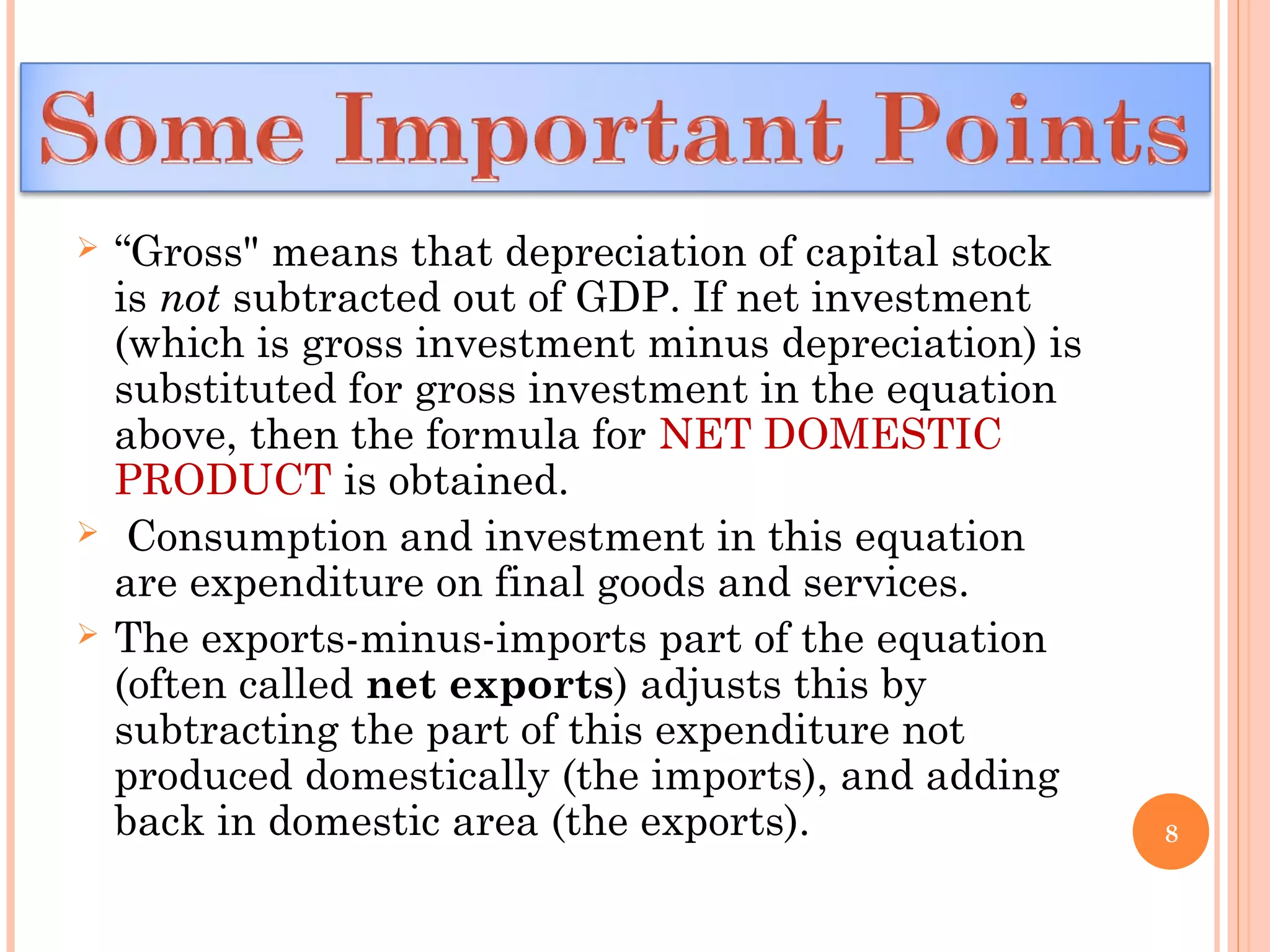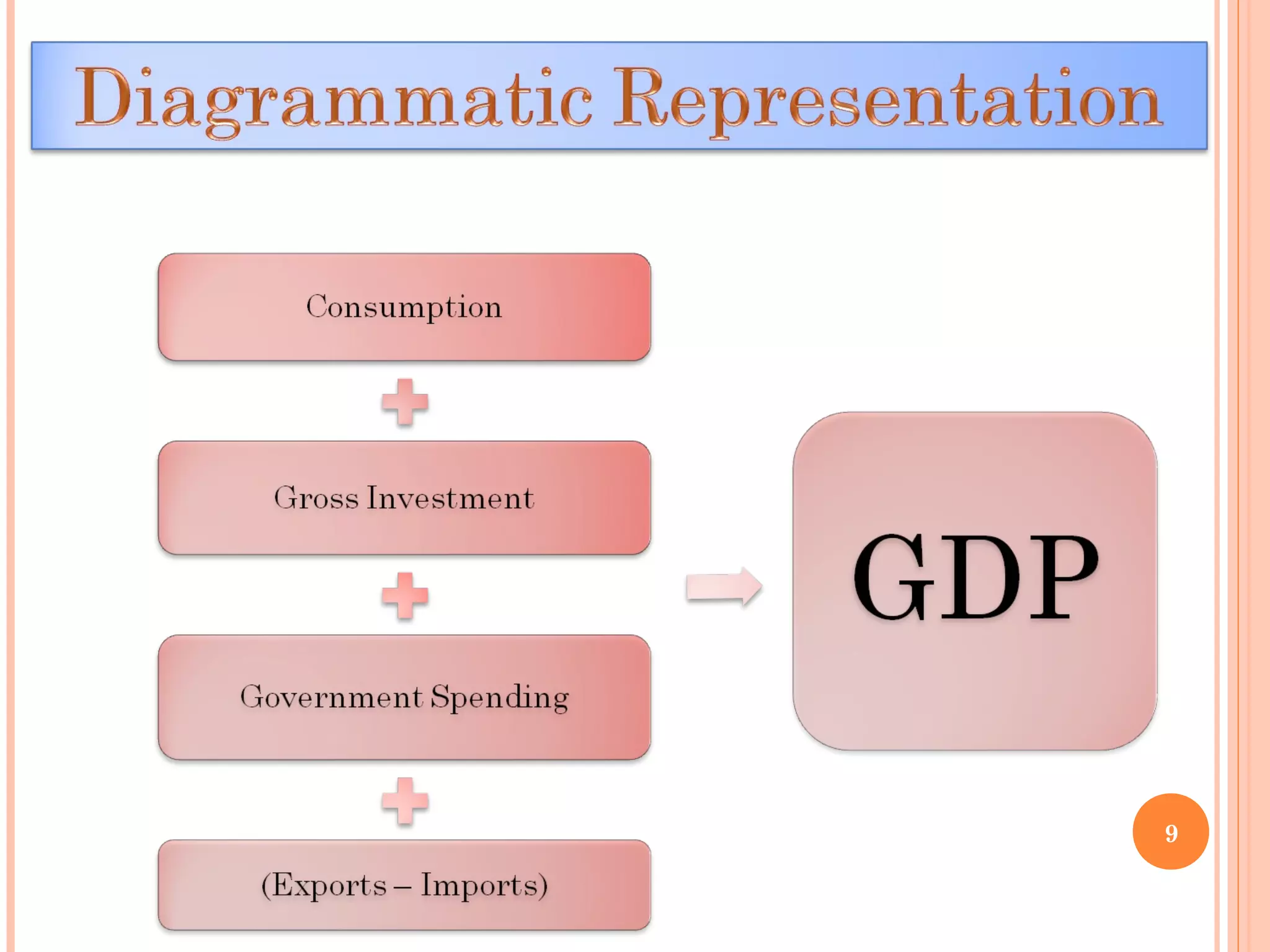The document defines GDP (gross domestic product) and provides three equivalent definitions:
1) Total expenditures on final goods and services produced domestically in a year
2) Sum of the value added at each stage of production by all domestic industries plus taxes and subsidies
3) Sum of all domestic income including employee compensation, business profits, taxes, and subsidies.

























